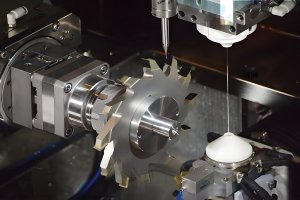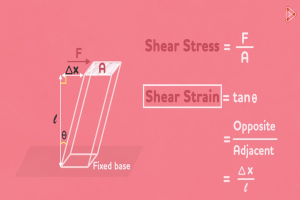In the realm of plastic manufacturing, two prevalent mold types are utilized to meet diverse production needs: multi-cavity molds and family molds. Multi-cavity molds are designed with multiple cavities of the same part, allowing for simultaneous replication and higher volume production. On the other hand, family molds cast different components within a single mold cycle, often combining parts that assemble together in a product line. Choosing between these molding options is critical for manufacturers, as it impacts efficiency, cost-effectiveness, and consistency across production runs. A clear understanding of each mold type’s mechanics and applications ensures informed decision-making for optimal manufacturing outcomes.
Understanding Multi-Cavity Molds
Multi-cavity molds are intricately designed tools used in manufacturing to mass-produce identical parts. They consist of multiple cavities, each an exact replica of the mold pattern, allowing for simultaneous production of several units per cycle. This design significantly increases consistency across all produced items, ensuring uniformity and reducing discrepancies that might otherwise arise when producing each part separately. For projects with large order volumes, multi-cavity molds excel by enhancing productivity; they maximize the output within a given time frame as each cycle yields numerous components. However, these molds come with a higher initial cost due to their complexity and require a larger upfront investment. Additionally, because each cavity mirrors one another, there’s limited flexibility to incorporate varied designs within the same mold, making them less suited for producing diverse products simultaneously.
Understanding Family Molds
Family molds are specialized tooling options distinguished by their ability to produce multiple and different components within the same mold cycle, effectively manufacturing a family of related parts simultaneously. This unique characteristic leads to significant cost savings on smaller production runs as it reduces the number of separate molds needed. Additionally, by consolidating various parts into one mold, manufacturers can streamline assembly processes and reduce handling time. However, utilizing family molds does come with challenges; ensuring uniform quality across all parts can be difficult due to variations in size and complexity. This variance requires careful testing and quality control measures for each distinct part. Likewise, the intricate nature of these molds demands meticulous maintenance and occasional design compromises that could limit individual part optimization.
Comparing Production Efficiency: Volume Requirements and Turnaround Time
When evaluating production efficiency between multi-cavity molds and family molds, a core consideration is the volume requirement of the components being produced. Multi-cavity molds are designed with several cavities for the same part, which makes them ideal for high-volume production as they can simultaneously produce multiple identical parts per cycle. This can greatly increase output and diminish unit costs for large orders. In contrast, family molds hold different cavities for varied parts that typically form a set or assembly. While this may economize tooling costs and consolidate production steps by molding related parts at once, it often restricts the possible volume due to varying part sizes and cycle times. Moreover, the turnaround time for multi-cavity molds is usually faster given their capacity to generate numerous copies in a single shot, significantly speeding up total production cycles when demand for one specific part is high. Family molds, however, might lead to potential downtime if one of the parts has a slower cycle than others within the mold, potentially reducing overall operational efficiency. In summary, choosing between these two types of molds involves careful analysis of the expected production volumes and desired delivery speeds to align manufacturing capabilities with project needs.
Quality Considerations: Impact on Part Uniformity and Precision
In choosing between multi-cavity and family molds for a project, the impact on part uniformity and precision is pivotal. Multi-cavity molds are dedicated to producing identical parts, promoting high consistency and precise replication across all cavities. This uniformity ensures that each part meets the same exacting standards required for complex assemblies or when tolerances are tight. In contrast, family molds produce different parts within the same mold cycle, which can lead to variations in cooling rates and pressure changes, affecting the dimensional integrity of each component. Consequently, meticulous planning related to gate locations and mold design is necessary to maintain quality when opting for family molds. Furthermore, efficient material use and waste management play significant roles; multi-cavity molds tend to have less scrap and better control over material usage, reducing overall waste compared to family molds that may include runners and sprues connecting diverse parts.
Economic Analysis of Mold Types
When deciding between multi-cavity and family molds, an essential factor is the economic analysis which encompasses both up-front and long-term cost factors. The initial investment for a multi-cavity mold tends to be higher due to its complexity and need for precision in manufacturing multiple identical cavities; this cost can be justified for high-volume production runs where economies of scale come into play. In contrast, family molds may involve lower start-up costs but can result in increased cycle times and potential waste due to non-uniform parts – making them suitable for smaller, mixed-batch projects. The return on investment (ROI) for each mold type correlates strongly with project scale. For example, when producing large quantities of a single part, the efficiency and consistent output of multi-cavity molds often achieve a quicker ROI compared to family molds. Conversely, in low-to-medium volume scenarios or where product diversity is required without significant quantity, family molds might present a more favorable financial case due to their adaptability and lower initial expenditure.
Example of a Successful Multi-Cavity Mold Application
In the production of high-volume plastic bottle caps, a multi-cavity mold proved to be highly beneficial. Each cavity in the specially designed mold was responsible for shaping a single cap. This approach allowed for simultaneous manufacturing of numerous caps within each cycle, significantly increasing output and efficiency. The uniformity of the caps’ design ensured that filling all cavities would not cause imbalance or quality variations. By applying precision engineering, the manufacturer optimized the cooling system to achieve consistent solidification times across all cavities, resulting in a streamlined process with minimal waste.
Example Where a Family Mold Was the Optimal Solution
A toy manufacturer sought to produce a set of interlocking building blocks that required different shapes but utilized the same material. Implementing a family mold became the optimal solution, as it permitted the creation of multiple distinct parts simultaneously. The careful planning of part placement within the mold avoided any disparity in cooling time and resin flow. Consequently, this facilitated the harmonious fabrication of components with varying geometries while maintaining consistency in structural integrity and aesthetics. Ensuring balanced filling and ejection forces was pivotal in executing this strategy effectively.
Making an Informed Decision for Your Project
When selecting between multi-cavity and family molds for a manufacturing project, considering the scale of production, budget constraints, and part complexity is crucial. Larger volumes typically demand multi-cavity molds to maintain efficiency, whereas smaller runs or limited budgets may favor the cost-effectiveness of family molds. Complex parts requiring tight tolerances might benefit from dedicated cavities within a multi-cavity mold to ensure consistency. It’s advisable to consult with a professional in the field who can provide guidance tailored to the specific needs of your project. This way, you make informed decisions that balance quality and cost while meeting the necessary production requirements.
Discover the Art of Precision with WANT.NET – Your Ultimate Destination for Innovative Injection Molding Solutions. Choose us for unparalleled quality and expertise in bringing your ideas to life. connect to WANT.NET team today and take the first step towards transforming your visions into reality!
Other Articles You Might Enjoy
- Why should I choose CNC multi-axis machining in China? What are the advantages?
I usually choose Chinese CNC machining factories when I need to custom manufacture parts in large quantities. These factories not only have advanced technology and equipment but also provide high-quality…
- The Benefits of Multi-Material CNC Machining for Complex Parts
Introduction to CNC Machining and Multi-Material Machining CNC (Computer Numerical Control) machining stands as a cornerstone in the manufacturing industry, enabling the precise creation of complex parts through automated control…
- Hardened Steel vs. Pre-Hardened Steel in CNC Machining: What's the Difference?
CNC Machining: Hardened Steel vs Pre-Hardened Steel Computer Numerical Control (CNC) machining is a crucial method in the manufacturing industry, known for its ability to produce complex and high-precision parts…






